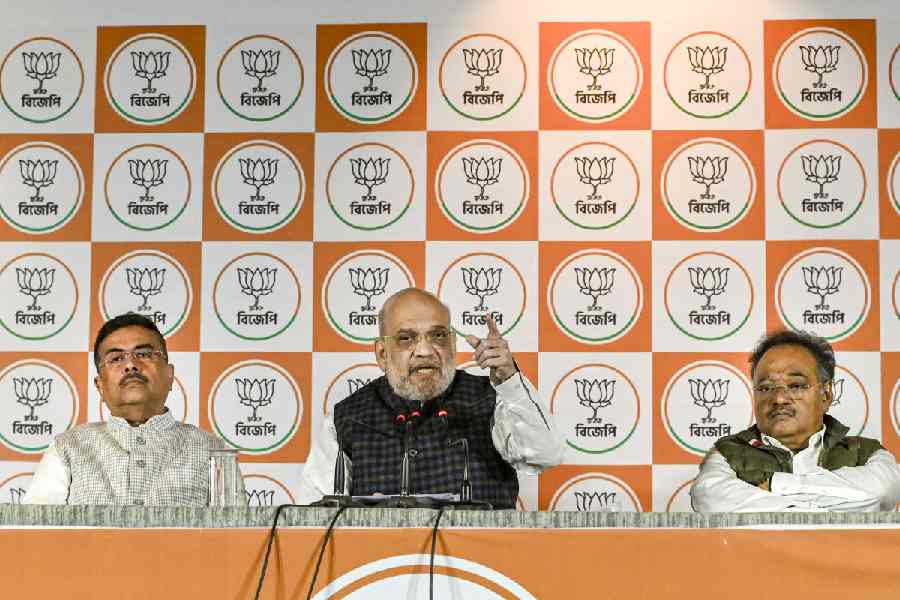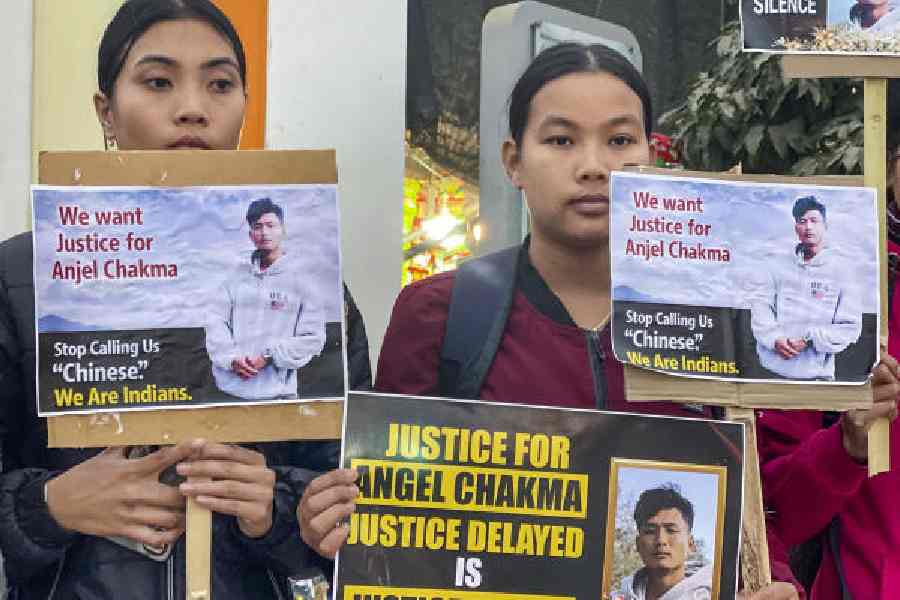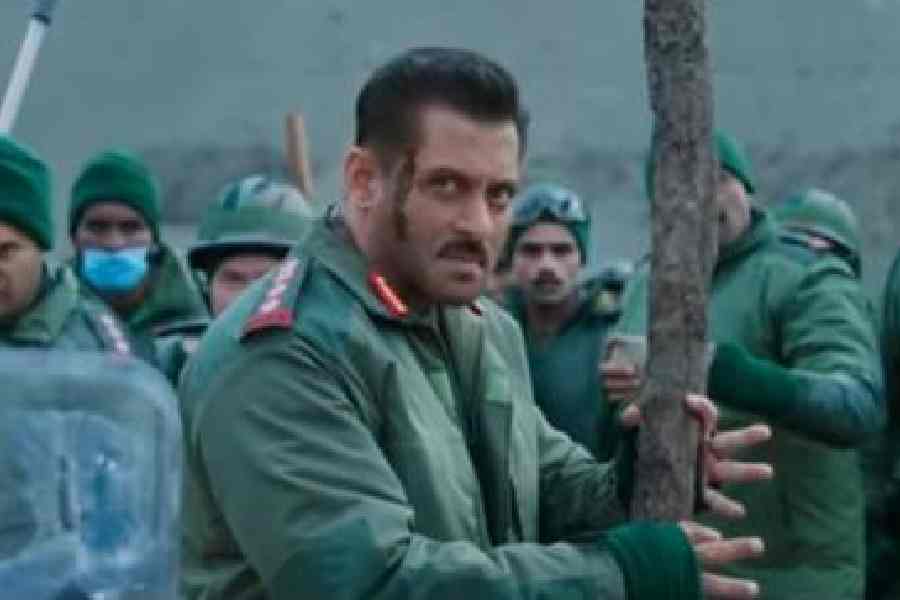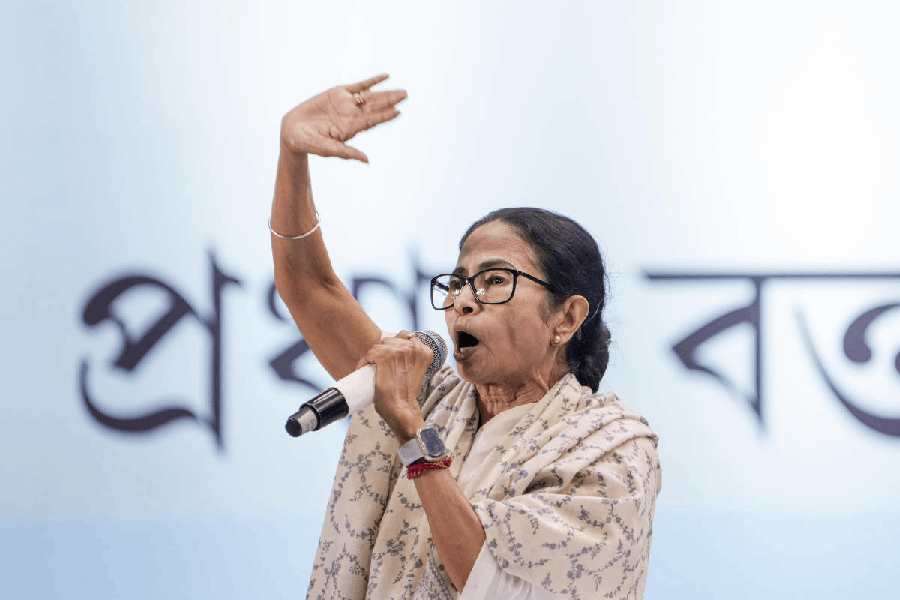There are moments in the life of a ruling party when little seems to go right. Even as the stakes in a contest are higher than ever before, the card that can turn things around seems ever more elusive. For the Bharatiya Janata Party and the other members of the saffron fraternity, Uttar Pradesh has a symbolic and substantive significance unmatched by any other state in the Union.
Strangely enough, it was only with the use of the Ram temple movement as spearhead that the party made major inroads, and emerged in 1991 as the single largest political formation in the state, a position it has not yet been dislodged from. Its vote-share even climbed marginally in the next round of assembly polls to reach 33 per cent. But since then, things began to
go awry. Its ministries have rested either on post-poll deals with Mayavati or else on its own ability to engineer defections and splits in the smaller parties.
This has enabled it to ride out most of the last five years in power in Lucknow, but has achieved little more than that. A closer look shows a high degree of vulnerability. In the last assembly polls, facing a disunited opposition, the party did not do so well as it hoped. Its candidates led in just 157 assembly segments. It won by a margin of less than five per cent or less in more than one of three of these seats.
The actual comparison should be not with the last assembly polls in 1996 but with the last general elections in 1999. Unlike in 1996, the BJP had been in power in the state for over two years. More than the wages of anti-incumbency, what probably marred its chances was its non-performance in power. It led in only 125 segments. More ominous for it was the sobering home truth that the Kargil card did not yield a vote dividend. And that too in an election where Atal Bihari Vajpayee was virtually a presidential candidate in the tradition set by the late Indira Gandhi. The inability of the party to get its act together prompted a change of guard in the state but the acid test lies ahead.
The battle is far from being won. The implications are disturbing for the ruling party. As of now,
it does not rule a single other large Hindi-belt state. Outside Gujarat and Himachal Pradesh, it does not have any state governments that are completely saffron. More than the handful of saffron ministries in the states, there is the critical role of UP in
national politics. It may have dimmed in its influence but it still counts for a lot.
The BJP's spell in power in New Delhi since 1999 has not seen it exposed until now to a direct fight with a dogged opponent in a state that has been its stronghold for over a decade. With its back to the wall, the saffron fraternity has played not one, but two, cards. The mandir was an obvious choice for the Vishwa Hindu Parishad. It had hoped to resolve the dispute in its favour by the middle of March. Now, even L.K. Advani admits that a dispute with such a long lineage and history cannot be resolved with a deadline like that in mind.
Going even further, the party president, Jana Krishnamurthy, has asserted that his party will be bound by the National Democratic Alliance agenda until 2004. Power in Delhi is more important to the party than a home for Ram lalla. Either the law or a mutual settlement is the only feasible way out. Unable to play the Ram issue owing to compulsions of power, the revamped Mandal card has been brought into play. But Kalyan Singh's exit has deprived it of a front-ranking leader from the other backward classes. More seriously, this marks a tacit victory for the hardened advocates of reservation like Mulayam Singh Yadav and Mayavati. Far from the Hindutva agenda overwhelming all, it is caste-based mobilization that has won legitimacy from the votaries of saffron.
Not only that. There is an inherent contradiction between projecting Rajnath Singh as a saviour of the state and relying on backward-class mobilization. Singh is the first Rajput chief minister since Bir Bahadur Singh. His trump card is his ability to rally the upper caste, disillusioned by Kalyan Singh's open advocacy of a non-savarna, populist Hindutva. Now, Singh has to exorcise his predecessor's ghost while playing the OBC card. This would be a tall order in any situation and is all the more difficult today.
There continues to be speculation in sections of the press about the possible adverse impact of a defeat in UP for Vajpayee's government. It is indeed true that the Union ministry may not fall like ninepins. The aftermath of the 1998 winter elections led to the withdrawal of support by a key ally, and fresh general elections. But the entire opposition knows that this worked in favour of the NDA and its leader. Further, in the winter of 1998, it was the Congress that was the challenger and main beneficiary. In UP, it is hardly in the running except to be a balancing force. The contest seems to be between Yadav, who hopes to supplant the BJP, and Mayavati, who hopes to undercut him and emerge as the lynchpin of power.
Either result would be a more complex one, leaving some elbow-room for Vajpayee and his allies. Much depends on who makes the post-poll ministry. If the house is hung, as it has been three of the last four times, it will all hinge on who wins how many seats, and who can combine with whom and for how long. But this still leaves open another possibility. In the past, even governments that were stable and rock-solid in the seat of power in New Delhi have lost steam after major state-level electoral reversals. This happened to Indira Gandhi in 1983 and P.V. Narasimha Rao after 1996, when the Congress was trounced in two key southern states. For Vajpayee's party, UP may not mark the end but it could well be a milestone in the decline of the pre-eminence that the party has enjoyed in much of north India.
It would exacerbate tensions with allies, especially the ones who feel slighted. More critically, a defeat would set off a fresh round of debate on how ideologically charged a party the BJP ought to be, and whether it can thrive in the absence of emotive slogans like the ones on the Ram temple. And it would have put paid to any hopes of economic reform and deepen the sense of drift on policy matters. As in the past, the outcome in UP will have major repercussions for national politics. In 1997, it was by aligning with Mayavati, and then by breaking her party, that the BJP set itself up for a major run for power in New Delhi. Now, the boot may well be on the other front and a fresh re-alignment of forces may be the first major outcome of the elections in the country's most populous state.
The author is an independent political analyst and a visiting assistant professor at Cornell University, Ithaca
 Wednesday, 31 December 2025
Wednesday, 31 December 2025









